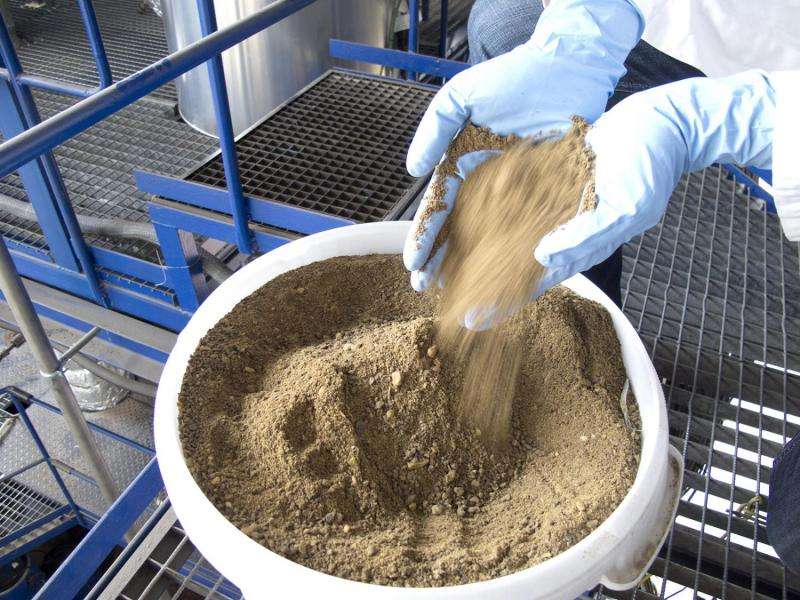Meat and bone meal as a source of phosphorus

Slaughterhouse waste is processed into meat and bone meal and subsequently fed to livestock or incinerated. This meal could be put to better use, though. It contains phosphorus, a scarce mineral used as fertilizer. A new system burns meal, producing ash that could be used as the raw material for phosphorus fertilizer.
Liverwurst, salami, steak – Germans eat a lot of meat. Not all parts of cattle and swine land on plates, though. Their teeth, hooves, bones and eyes, for instance, are left over and processed into meat and bone meal – over 200 000 tons in Germany alone every year. The ground scraps are fed in part to livestock. The rest, consisting of parts like eyes and brains that might carry the BSE pathogen, is incinerated in waste incineration plants together with other waste.
Agricultural Fertilizer
Researchers at the Fraunhofer Institute for Factory Operation and Automation IFF in Magdeburg are proposing a new method: "We burn meat and bone meal in a special way that enables us to recover an important mineral from it," explains Patric Heidecke, research manager at the Fraunhofer IFF. After all, approximately three to four percent of the raw material is phosphorus, a mineral that is not abundant and is expensive. It is primarily used as agricultural fertilizer. As much as sixteen percent of the ash is phosphorus. That is as high as in natural deposits located primarily in China, Morocco and the USA. "Just like the phosphoric material extracted from those deposits, the ash could be processed into fertilizer," says Heidecke. "In purely mathematical terms, this could cover around five percent of annual demand for phosphate fertilizer in Germany."
Separating Heavy Metals from Ash
Although the meat and bone meal is already being incinerated in part even now, it is mixed with other fuels to do so. On the one hand, this dilutes the phosphorus in the ash produced and, on the other hand, undesired substances also end up in the ash through other substances. Another problem is that the byproduct contains heavy metals such as mercury and lead, which are not allowed to land in a field later, too. The ash from waste incineration plants contains these contaminants, either, however.
The researchers have factored all of this into their research. The principle entails loading meat and bone meal in a fluidized bed unit heated to 850 degrees Celsius. Air flows continuously from below into a combustion chamber and mixes the meal with hot quartz sand. The mass ignites and the organic particles burn completely. The heat is drawn off and can either be used directly or is converted into electricity. The combustion gas produced, which also contains a large part of the ash because of the vortex, is conducted into a cyclone separator, which separates the "good", clean ash from the "bad", which contains the toxic heavy metals. The researchers slow the stream of air to do this. The ash descends to the floor, while the heavy metals and ash particles, which are smaller than one tenth of a millimeter, remain airborne. They are trapped and disposed of later.
What parameters have to be set for combustion to produce a maximum of heat, on the one hand, and to prevent the formation of undesired contaminants such as nitrogen oxides, on the other hand? The researchers studied this in a wide-ranging series of tests. The researchers used a fluidized bed unit that is approximately four meters high and produces 150 kilowatts of power. "A unit with ten megawatts of power could also be built without any difficulty, however," says Heidecke. They now intend to build the first commercial unit at a field partner's facilities. "This concept will have established itself in ten years," the expert is certain, "since it is not only suitable for meat and bone meal as fuel but also for sewage sludge." Although the fertilization of fields with sewage sludge is still permitted at this time, the sludge contains heavy metals as well as nitrate, which can eutrophy bodies of water.
Provided by Fraunhofer-Gesellschaft



















